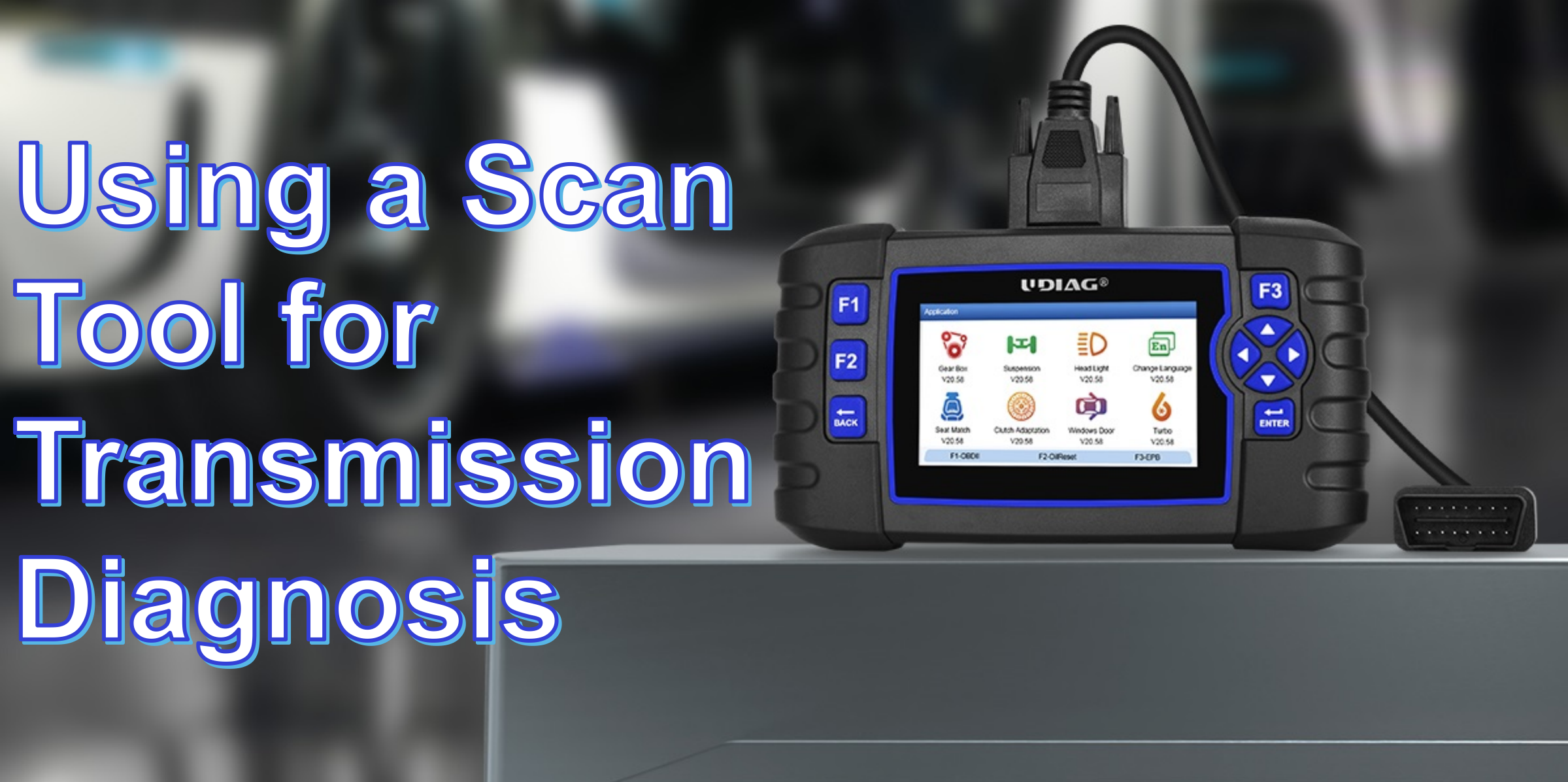Using a Scan Tool for Transmission Diagnosis
2023-06-28 by UDIAG
The automotive transmission system plays a crucial role in the overall performance of a vehicle. It is responsible for transferring power from the engine to the wheels, enabling smooth acceleration and efficient gear shifting. However, like any mechanical component, transmissions can develop issues over time. Proper diagnosis of transmission problems is essential to identify the root cause and perform necessary repairs. In this regard, scan tools have become invaluable tools for automotive technicians in diagnosing transmission-related issues.
Understanding Scan Tools
Scan tools are electronic devices designed to communicate with a vehicle’s onboard computer system. They enable technicians to retrieve diagnostic information and perform various tests to identify malfunctions. When it comes to transmission diagnosis, scan tools provide valuable insights by accessing the transmission control module (TCM) and retrieving pertinent data.
There are different types of scan tools available, ranging from basic code readers to advanced diagnostic scanners. Basic code readers are inexpensive and primarily designed to retrieve and clear diagnostic trouble codes (DTCs). On the other hand, advanced diagnostic scanners offer a wide range of features, including live data streaming, functional tests, and enhanced vehicle-specific capabilities.
Preparation for Transmission Diagnosis
Before using a scan tool for transmission diagnosis, certain preparations are necessary. These include ensuring the vehicle and necessary equipment are ready for diagnosis. Additionally, accessing the vehicle’s OBD-II (On-Board Diagnostics) port is crucial for establishing a connection with the scan tool. It is also important to have up-to-date diagnostic software, as manufacturers often release updates to address known issues and improve the diagnostic capabilities of the scan tool.
Using a Scan Tool for Transmission Diagnosis

Once the necessary preparations are complete, the scan tool can be connected to the vehicle’s OBD-II port. The scan tool retrieves DTCs related to the transmission system, providing a starting point for diagnosis. Analyzing the retrieved DTCs helps in understanding the specific problems within the transmission.
In addition to DTCs, scan tools provide access to live data and freeze frame data. Live data streaming allows technicians to monitor real-time sensor values, such as transmission fluid temperature, speed, and pressure. Freeze frame data captures relevant vehicle parameters at the moment a DTC is set, aiding in identifying conditions that triggered the fault.
Moreover, scan tools offer functional tests that enable technicians to command specific actions within the transmission system. These tests can include engaging gears, activating solenoids, or operating the torque converter. Performing these tests helps in verifying the functionality of various transmission components.
Advanced Features of Scan Tools for Transmission Diagnosis
Advanced scan tools often come equipped with transmission-specific modules and functions. These modules provide detailed information and diagnostics specific to the transmission system, assisting technicians in identifying complex issues accurately. Additionally, scan tools allow technicians to reset adaptation values and perform relearning procedures, which can optimize transmission performance after repairs or component replacements.
Monitoring and analyzing sensor data is another crucial aspect of transmission diagnosis. Scan tools enable technicians to track the behavior of sensors in real-time, helping identify abnormalities or inconsistencies that could be causing transmission problems. Furthermore, keeping the scan tool’s firmware and software up-to-date ensures compatibility with the latest vehicle models and enhances the diagnostic capabilities of the tool.
Troubleshooting and Repair Strategies
Once diagnostic trouble codes are retrieved and analyzed, technicians can begin the troubleshooting process. They can refer to code descriptions and known repair procedures provided by the scan tool or access manufacturer-specific information and technical service bulletins for guidance. By narrowing down the possible causes based on the scan tool data, technicians can perform targeted inspections and tests to confirm the underlying issue.
It is important to note that while scan tools provide valuable data, they are not a substitute for professional expertise and experience. Transmission diagnosis often requires a combination of technical knowledge, hands-on inspections, and interpretation of scan tool data. Technicians must exercise caution and avoid solely relying on scan tool results, as misinterpretations or incomplete information can lead to incorrect diagnoses.
Limitations and Considerations
While scan tools are powerful diagnostic tools, they have limitations. Some transmission-related issues may not trigger diagnostic trouble codes, requiring additional troubleshooting methods. Additionally, certain advanced functions of the transmission system may not be accessible through the scan tool, necessitating the use of other specialized equipment or manual inspections.
Furthermore, using scan tools effectively requires proper training and knowledge. Technicians should familiarize themselves with the functionalities and capabilities of the scan tool specific to transmission diagnosis. Without adequate training, there is a risk of misinterpretation of data or improper use of the tool, leading to inaccurate diagnoses and unnecessary repairs.
Conclusion
Scan tools have revolutionized the way transmission diagnosis is performed in the automotive industry. They provide technicians with valuable insights into the inner workings of the transmission system, helping them identify and address issues efficiently. However, it is crucial to recognize the importance of professional expertise and experience in conjunction with scan tool data. By combining technical knowledge, manual inspections, and scan tool analysis, technicians can effectively diagnose and repair transmission problems, ensuring optimal performance and reliability of the vehicle. The future of scan tools in automotive diagnostics looks promising, with continuous advancements and improvements to further enhance their capabilities and accuracy.


